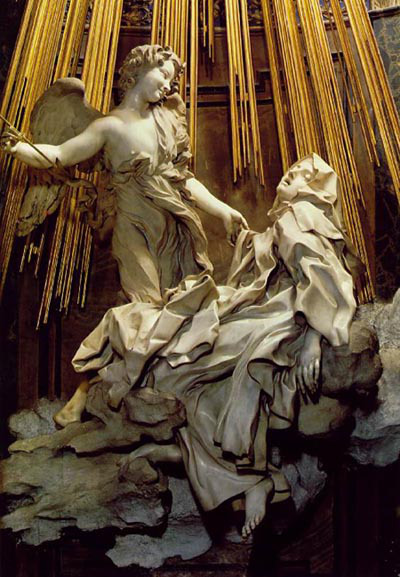…Don Quixote by Miguel de Cervantes showed a marked contrast between the new spirit and the old, something remarkable in that the same divisions can still be discerned in our post-modern times…
…Wherever we look, it is there. in politics a wooden defensiveness replaces adventure; in literature satire replaces bombast. Social values are different: the old aristocracy had been military leaders; the new give themselves up to the giddy pursuit of official status and expensive pleasure. And religion reflects the same change. In the sixteenth century the Spanish Church had been active, crusading missionary:its heroes had been Las Casas, Loyola, Saint Teresa; in the seventeenth, it is dull and passive: its only great figure is Molinos, the founder, appropriately, of religious quietism.

—St. James the Greater, Apostle
25 July
Santiago Matamoros
(St. James the Moor Slayer)
“The General Chronicle of King Alfonso X the Wise reports a miraculous event during the battle of Clavijo, which gave the cult of St. James a dramatic configuration. According to witnesses, Santiago was seen descending from the sky mounted on a white horse, having in one hand a snow-white banner on which was displayed a blood red cross, and in the other a sword… The imagery will present him thereafter as a knight on a white horse, carrying a banner with the Cross of Santiago and wielding a flashing sword. Protector of Christendom, he became Santiago Matamoros, the Moor slayer. … click image for source…
Perhaps the most striking illustration of this new spirit is the sudden change which took place, early in the seventeenth century, in the patron saint of Spain. For centuries that saint had been Santiago- Saint James, who was reputed to have come to Spain, and who was there transformed into a fighting saint, the patron of holy war. He was known as Santiago Matamoros, “Santiago, the killer of Moors.” All through the Middle Ages, Santiago inspired Spanish Christians fighting against the infidel. Again and again,in the critical moment of battles, he appeared to them, mounted on a white horse in the sky, to give them fresh courage and turn defeat into victory.
In America, too, fighting far from home against overwhelming odds, the conquistadors often saw Santiago, sometimes alone on his white horse, sometimes at the head of an ethereal army, doing battle for them in the clouds. But then, quite suddenly, in Spain and America alike, his authenticity was challenged. The doubters- Cervantes himself among them- raised there voices; there was a brief struggle, conducted in full legal form; and in 1617, Santiago, the saint of crusade and victory, collapsed. He was replaced, in Spain, by Saint Teresa of Avila- or rather by an imaginary Saint Teresa, not the real saint, that “gadabout nun,” social, energetic, practical; but a gaping beata, as we see her in Bernini’s effigy, the personification of passive, inexhaustible female credulity.
By the seventeenth century Santiago had vanished. He was replaced in Mexico by the creole San Felipe de Jesus, in Peru by another female beata, the half-casrte Santa Rosa de Lima. This sudden change of saints symbolizes a change in the whole religious character of Spain. (to be continued)…







 COMMENTS
COMMENTS